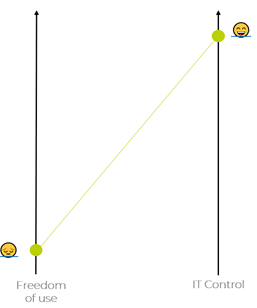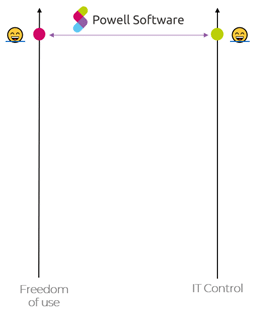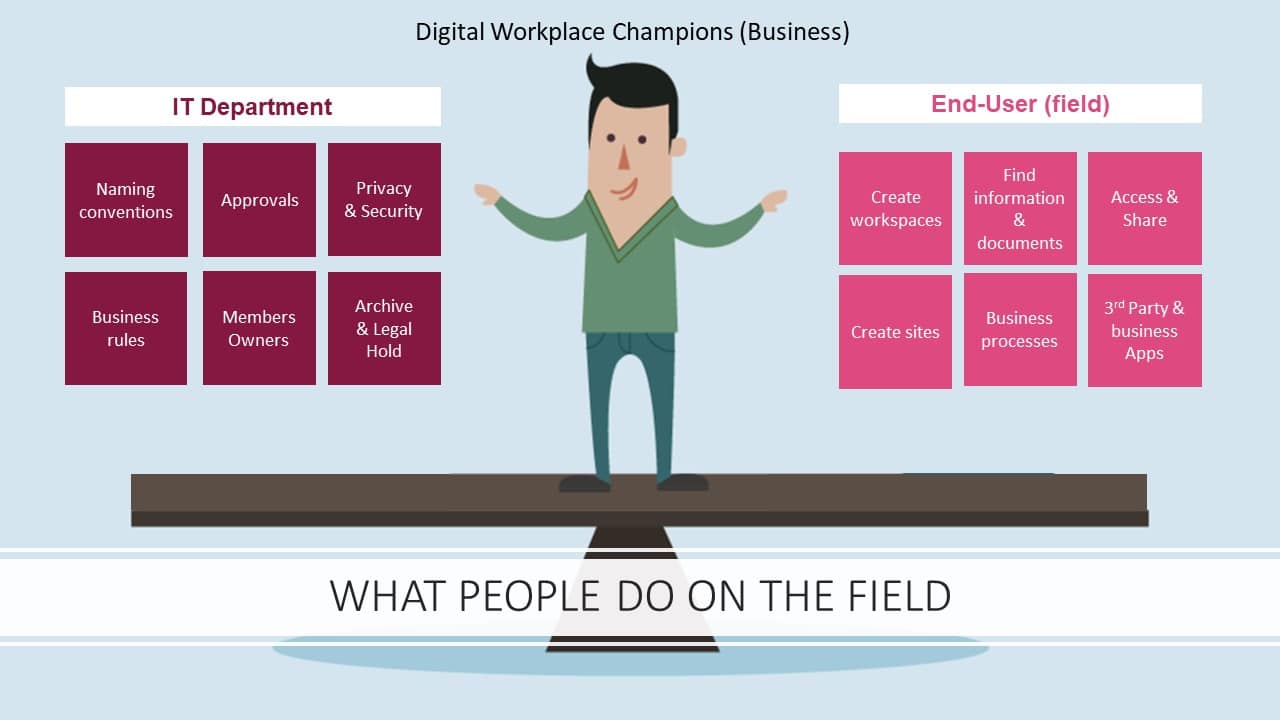Adapting the Digital Workplace to the hybrid workplace
“74% of companies plan to shift some of their employees to remote working permanently”- Gartner
Connecting employees in the hybrid workplace, which combines a virtual and physical setup, is a key priority for organizations. In this model, a portion of the workforce works remotely while others are at the office, on the field, in warehouses, or factories. In the hybrid context, instilling an inclusive culture and creating a positive employee experience is essential to building a resilient organization. To create this, organizations need to rethink the way they communicate, collaborate, and help employees carry out their day-to-day tasks.
Communication
Hybrid work is the future, and in this model, all employees must feel included. This involves ensuring everyone gets the same information. In a hybrid model maintaining a social link even as employees are based in various locations is also crucial.
Collaboration
Nurturing healthy team dynamics and adapting work methods with digital collaboration processes is necessary for the hybrid workplace. The recent and sudden adoption of Microsoft Teams by millions of users is the best example to illustrate this. Alongside this platform, managers will also need to introduce more flexible work from home policies to achieve their goals.
“82% of managers surveyed expect to have more flexible work from home policies post-pandemic” Microsoft
Day-to-day tasks
Bridging communication and collaboration pillars will allow organizations to provide the experience expected by end-users in the hybrid workplace. It will enhance their capability to fulfill their day-to-day tasks efficiently and seamlessly even in distributed teams (e.g. employee onboarding).
Efficiency rules in the hybrid workplace
Team efficiency partly relies on an organization’s capacity to empower users with the digitalization of their day-to-day tasks. This means giving them the right set of tools, digital workplace mechanics, and the flexibility and freedom end-users need to be empowered.
Let’s dive straight into a concrete example to illustrate this – new employee onboarding. With the right digital workplace, an HR Manager can provide an adapted onboarding experience
- Communication – the corporate intranet provides access to company information and resources (company mission, videos, company onboarding kit).
- Collaboration – Microsoft Teams provides a private space dedicated to the newcomer where they can interact with their manager, buddy, and HR Manager (30-day plan, personal documents, business onboarding resources).
The IT department is also a key pawn on the chessboard as they are involved in digital workplace management, and setting rules. Digitalizing processes is about creating workspaces, accessing, and sharing information as well as collaborating with internal and external contributors. The process needs to be secure and to obey certain rules.
The reality is that users are confronted with strict business rules that prevent them from having the flexibility they need to carry out daily tasks. This can in turn impede organizations from achieving their goal of providing a flexible workplace culture adapted to the hybrid workplace.
A closer look at digital workplace governance
Digital workplace governance is managed by the IT Department who defines business rules and secures the work environment. They also help create a uniform end-user experience. While end-users need to access, find, create, and share information daily. The role of IT is to make sure these actions are controlled and obey specific rules which guarantee compliance and security.
Digital workplace governance is especially crucial when teams are geographically distributed.
Digital workplace governance main challenges – flexibility vs control
End-users need freedom and flexibility to adapt to the hybrid workplace. However, IT is often too security and control-focused.
Flexibility – giving total freedom of use enhances the end-user experience. However, this can result in the creation of uncontrolled workspaces and shared information. Workspace creation will also often be duplicated for similar purposes.
Control – the IT Department can use its control capabilities to restrict creation and usage to get the best control. However, this means that employees will no longer benefit from the power and features offered by their digital workplace. This is contradictory to their needs in the hybrid workplace context.
A restricted and poor user experience will cause employees to struggle to understand the usefulness of their tools. It could also negatively impact adoption and reduce productivity levels.
It’s clear digital workplace governance is a topic that should be led by both IT and the business to find and establish a balance allowing freedom of use and respect of the rules.
Finding the right balance between flexibility and IT control to make the digital workplace an efficient work environment in favor of communication and collaboration is the biggest challenge.
Achieving an inclusive and collaborative culture without neglecting control
Realizing an inclusive and collaborative teamwork culture is about building a people-centered digital workplace strategy. This strategy should provide technology that gives employees the experience they need but doesn’t neglect control and security.
The role of technology
Organizations usually face one of two scenarios:

Scenario 1 – A low freedom-of-use and degraded user experience which favors IT control and rules.

Scenario 2 – high flexibility and freedom-of-use which provides the best user experience with less control.

Powell Software technologies make it possible to answer both IT and business needs with Powell Governance and Powell Manager.
IT Departments
Technology can fill the lack of automatic mechanisms and eliminate its pain points:
· Daily actions
· Time required
· Risks linked to it
IT can set rules and integrate them into the user’s journey so they can keep focused on what they do best.
End-users
Providing ready-to-use templates with integrated rules brings end-users the freedom they need in a controlled environment.
When creating teams through Powell templates, the creation process will automatically include the rules set by the IT Department all along a guided process so they don’t need to know the rules and best practices

The role of templates and Digital Champions
In a hybrid context, Digital Champions play a key role as they are at the crossroads between the business and the IT department. They can act as a bridge between IT and end-users and help establish rules adapted to the business’s needs. A hybrid workplace Digital Champion can help IT build relevant templates (crisis management, events hub, employee advocacy, newcomers onboarding, Sales RFP…) with integrated rules that won’t harm end-users daily activities while providing them with the right experience. They also can approve the creation of templates.
With the Powell Software digital workplace platform, composed of Powell Intranet and Powell Governance, it is easy to find the right balance, to set and automate digital workplace governance while still being able to minimize IT constraints and maximize end-user digital satisfaction and adoption.
Organize a demo with our team to see how Powell Software can help you build the inclusive and collaborative culture you need without neglecting control and killing adoption.
Written by Julien Roland ![]()




